#New Hebrides
Text
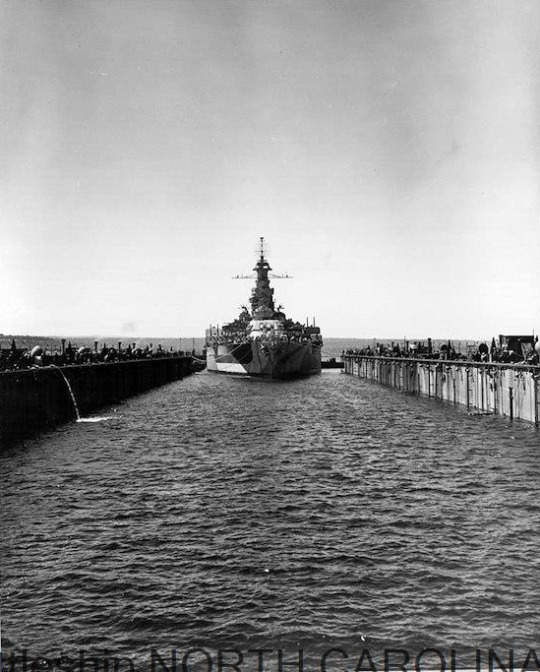




USS West Virginia (BB-48) in the floating drydock USS Artisan (ABSD-1), having her screws repaired at Espiritu Santo, Aessi Island, New Hebrides.
Date: November 14, 1944
Battleship North Carolina Archives: P2016.021
Colorized by Passion Battleship: link
#USS West Virginia (BB-48)#USS West Virginia#Colorado Class#Dreadnought#Battleship#Warship#Ship#World War II#World War 2#WWII#WW2#WWII History#History#Military History#Espiritu Santo#Aessi Island#New Hebrides#USS Artisan (ABSD-1)#USS Artisan#Floating Dry Dock#Dry Dock#Drydock#November#1944#United States Navy#U.S. Navy#US Navy#USN#Navy#my post
21 notes
·
View notes
Text
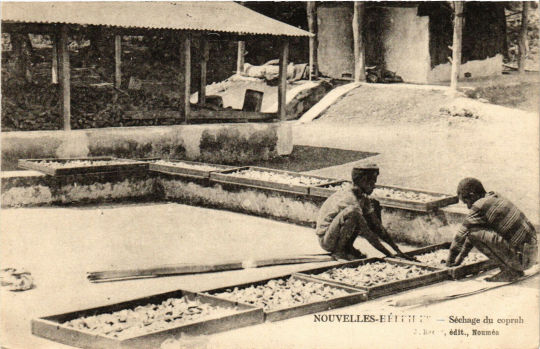
Copra (the dried, white flesh of the coconut from which coconut oil is extracted) drying on the New Hebrides
French vintage postcard
#carte postale#old#ansichtskarte#white#coconut#photo#vintage#postkaart#copra#photography#briefkaart#hebrides#postkarte#french#new hebrides#ephemera#oil#postcard#sepia#flesh#new#drying#postal#tarjeta#dried#extracted#historic
11 notes
·
View notes
Photo

“Tropical retreat, Lololima Cascades / Vanuatu .â€
0 notes
Photo

“Tropical retreat, Lololima Cascades / Vanuatu .â€
0 notes
Photo

“Tropical retreat, Lololima Cascades / Vanuatu .â€
0 notes
Photo

“Tropical retreat, Lololima Cascades / Vanuatu .â€
0 notes
Note
Fun fact please?
Today You Learned about Shion/Shony.
[Wikipedia’s article is under ‘Seonaidh’, but I read about it under the name ‘Shion’ in Mark Williams’s book.]
So, in the early 1700’s book A Description of the Western Islands of Scotland by Martin Martin (yes, that is his name) describes an annual nighttime ritual on the Isle of Lewis, in the Hebrides, in which the local church community would get together, pick someone to hold a cup of ale, and then wade into the water and dump it in while declaring it an offering to Shion or Shony to have a prosperous harvest. Now Marty-Mart thought that this was a holdover from an old pagan religion. It was popularly believed by scholars that ‘Shion’ must have been some old Celtic deity of the sea, whose cult was long forgotten, but that this one little island off the coast of Scotland remembered, if only for this one little holiday. Wikipedia even calls this ‘likely’, though it doesn’t have a citation for that sentence.
Welp. Probably not, according to Mark Williams.
In his book Ireland’s Immortals, Mark Williams talks about Marty-Mart’s records, and his own research. He also brings up that acclaimed scholar Ronald Hutton (famous debunker of New Age nonsense) independently came to the same conclusion, and that is this: this probably isn’t a pre-Christian ritual that survived. This is probably a pre-Reformation ritual that survived. After all, ‘Seonaidh’ is close to the Scottish Gaelic form of ‘Johnny’, in the same way that ‘Sean’ is the Irish take on ‘John’. Williams suggests that, given there are a ton of weird little festivals for saints all over the world, and the prominence of water, this is probably a ritual feast celebration to Saint John the Baptist, and it somehow survived the Reformation in this remote corner of Scotland.
A bit weird, but I hope it’s a good Fun Fact.
#Fun Fact Friday#Today You Learned#Isle of Lewis#Shion#mythology#Mark Williams#Ronald Hutton#Scotland#Hebrides#Saint John the Baptist#religion#New Age
12 notes
·
View notes
Text
so not only am i Not playing principal on the beethoven, that was probably the worst reading i've ever done in orchestra. great
#this week just keeps getting fucking better.#really it was just the third movement i fucked up cause i kept getting hopelessly lost the other mvts were okay but like#usually i'm better than that at reading. fuck me man#great first impression for the new grad.#well at least he seems nice i guess. i just want to play principal on more than just the hebrides overture my last semester of undergrad#sigh#i wanna talk about me#oboeposting
3 notes
·
View notes
Text
The Bard's Songs
Come away, O human child!
To the waters and the wild
With a faery, hand in hand,
For the world's more full of weeping
than you can understand.
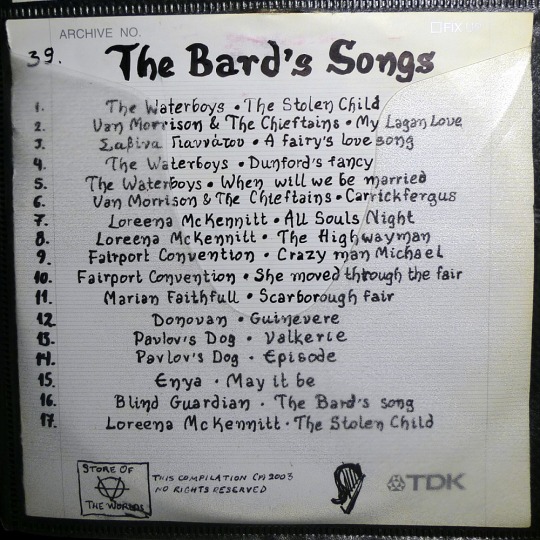
More than twenty years ago (well fuck me) I made a mixtape for our d&d campaign. That was when people used to burn audio CDs, and this was mixtape #39 (out of 271). I think I was playing an elf bard at the time.
I'm posting it here for posterity, for nostalgia, and as a snapshot of vanilla d&d lore/mood, as I experienced it back in the day. If it seems frightfully basic and predictable, well it was. Pretty much everything in that list is from Britain or Ireland or somehow evoking them. But hey, I ain't from there. It was exotic for me!
So it's vanilla and predictable, my little escapism soundtrack. And you know what else it is? A damn good compilation if I say so myself. "Fisherman's Blues" is one of best albums of all time, Loreena McKennitt is a genius, the Chieftains are giants, Pavlov's Dog are one of the few dad rock bands whose hits didn't age terribly, and hey, because I just listened to the whole thing again, when Enya stops singing "May it be" and the track continues with the Shire and the Fellowship leitmotifs, I am FULLY crying again, just bawling over here.
So here's to 2024, and the next 20 years of roleplaying, or as long as we got. Happy new year, everyone. Squeeze every drop out of life, and may your aim be true. The bard's songs will remain.
Tomorrow will take us away
Far from home
No one will ever know our names
But the bards' songs will remain
In my thoughts and in my dreams
They're always in my mind
These songs of hobbits, dwarves and men and elves
Come close your eyes
You can see them too
The Bard's Songs
The Waterboys - The Stolen Child [poem by W. B. Yeats, recited by Tomás Mac Eoin]
Van Morrison & The Chieftains - My Lagan love [trad. Irish]
Savina Yannatou - A fairy's love song [trad. Scottish, Hebrides]
The Waterboys - Dunford's fancy
The Waterboys - When will we be married? [trad.]
Van Morrison & The Chieftains - Carrickfergus [trad. Irish maybe]
Loreena McKennitt - All Souls Night
Loreena McKennitt - The highwayman [poem by Alfred Noyes]
Fairport Convention - Crazy man Michael
Fairport Convention - She moved through the fair [trad. Irish]
Marianne Faithfull - Scarborough Fair [trad. English]
Donovan - Guinevere (live)
Pavlov's Dog - Valkerie
Pavlov's Dog - Episode
Enya - May it be [LotR: The Fellowship of the Ring]
Blind Guardian - The Bard's song (In the forest)
Loreena McKennitt - The Stolen Child
This Compilation (P) 2003, Store of the Worlds, Inc. | No Rights Reserved
#trs#d&d history#yeap#prison ballads#mixtape#d&d#fluff#folk#for he comes! the human child#to the waters and the wild#with a faery hand in hand#from a world more full of weeping#than he can understand
102 notes
·
View notes
Note
Unfortunately i got david tenant beamed when i watched that netflix movie romcom where he’s a writer in the hebrides for his wedding and falls in love with a girl there I watched that thing like. Four or five times a week for most of 2014. The decoy bride i believe. Literally something snapped in me there
How much does this guy work? Every day I’m learning about a new DT movie I’ve never heard of before
73 notes
·
View notes
Text

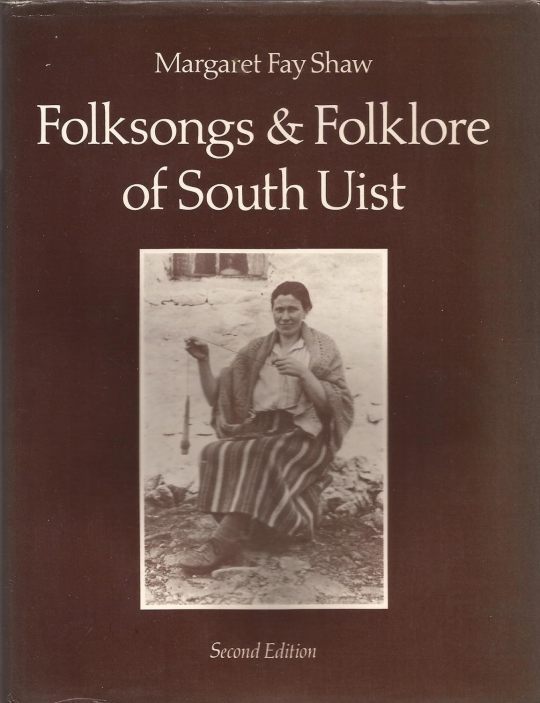


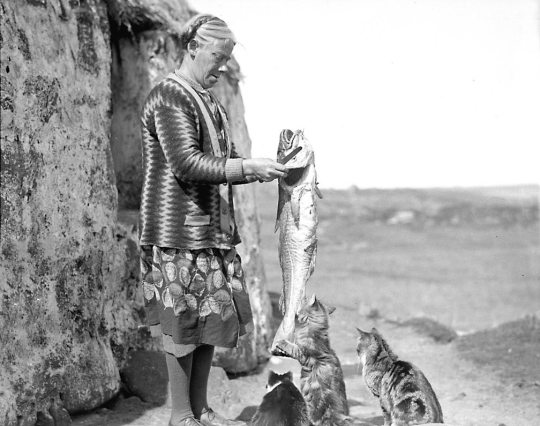


November 9th 1903 saw the birth near Pittsburgh of Margaret Fay Shaw, the American writer who did much to record the music and culture of South Uist.
Margaret Fay Shaw was one of the most notable collectors of authentic Scottish Gaelic song and traditions in the 20th century. The arrival of this young American on the island of South Uist in 1929 was the start of a deep and highly productive love affair with the language and traditions of the Gaels.
Shaw was also an outstanding photographer, and both her still pictures and cinematography contributed to an invaluable archive of island life in the 1930s. She met the folklorist John Lorne Campbell on South Uist in 1934; they married a year later and together helped to rescue vast quantities of oral tradition from oblivion.
She came of Scottish Presbyterian and liberal New England stock. The family owned a steel foundry in Pittsburgh and her parents were cultured people. Margaret was the youngest of five sisters and her early years were idyllic. Her first love was for the piano and she continued to play throughout her life.
By the age of 11, however, she was orphaned and obliged to develop the independence of character which was to lead her into a life's work far removed from her upbringing. At the age of 16, she made her first visit to Scotland at the invitation of a family friend and spent a year at school in Helensburgh, outside Glasgow, where she first heard Gaelic song.
Wanting to hear it in its "pristine" state, in 1924 she crossed the Atlantic again, this time engaging in an epic bicycle journey, which started in Oxford and ended at the Isle of Skye, where she remained for a month. It was during this trip that she began to use photography to earn a living, selling prints to newspapers, and magazines such as the Listener.
But it was not until she arrived on South Uist that she found her spiritual home. She was invited to the "big house" in Lochboisdale for dinner, and two sisters who worked there, Mairi and Peigi Macrae, were brought in to sing for the company. Margaret had never heard singing like it. For the next six years, she became their lodger and dear friend. They shared with her all of their immense stock of oral tradition which she faithfully transcribed, learning Gaelic as the work proceeded.
Her most important published work was Folksongs And Folklore Of South Uist, which has never been out of print since it was first published in full by Routledge and Kegan Paul in 1955. Not only was it a scholarly presentation of the songs and lore which she had written down during her sojourn on the island, but also an invaluable description of life in a small crofting community during the 1930s.
This classic work was undoubtedly the centrepiece of Shaw's career, though she also wrote several other books, including an autobiography, From The Alleghenies To The Hebrides.
On the neighbouring island of Barra in the early 1930s, an extraordinary social set - a kind of Bloomsbury in the Hebrides - had developed around the presence of Compton Mackenzie. One of his closest collaborators was John Lorne Campbell, who came from landed Argyllshire stock and had developed his interest in Gaelic at Oxford.
The two patricians set about producing The Book Of Barra, a collection of the island's history and traditions, to raise funds for an organisation called The Sea League, which they had established to campaign for the exclusion of trawlers from Hebridean waters.
Hearing great reports of an American woman's photography on South Uist, Campbell crossed over by ferry to seek her involvement in illustrating The Book Of Barra. He walked into the Lochboisdale Hotel one rainy evening in 1934 and found Shaw sitting at the piano; a suitably romantic initiation to a relationship which was to last for more than half a century. They married the following year and made their home on Barra until, in 1938, Campbell bought the island of Canna, where they lived for the rest of their scholarly lives. The island was given to the National Trust for Scotland in 1981, and John Lorne Campbell died in 1996.
There was nothing dry or academic, however, about Shaw. She travelled regularly to America until her late 90s. The fearsome ferry journey between Mallaig and Canna was regularly undertaken with equanimity, and she fortified herself to the end with the finest Kentucky bourbon. Her love of the Hebrides was, above all, for the values and lifestyle of the crofting people, and, particularly in South Uist in that 1930s heyday, it was deeply reciprocated. It is there that she will be laid to rest.
During her latter years she stayed at Canna House until her death at the grand old age of 101 in 2004.
96 notes
·
View notes
Text
Hey. It's @reaux07. If you remember my last angry history rant on Paul Robeson, I'm back for Part 2. This time? King Leopold II and his relationship to the Congo. I just finished writing a 5-page, single-spaced essay on this for class, so I'll do my best to summarize in bullet points this time rather than chunky paragraphs. This will still be long though, as a warning, but it's a necessary read. Please let me get through this, because y'all know this hurts to write.
Trigger warnings for... just about everything typically associated with mass colonization (e.g. rape, murder, torture, etc.). Tiktok below as a brief introduction first:
King Leopold II of Belgium, due to his personal unpopularity and lack of love from his parents, had low self-esteem. As his father had already made 50 attempts to colonize foreign lands to no avail, Leopold felt the only way to uplift both himself and his country was to take take control of his own colony.
He checked Sarawak, the New Hebrides, the Fiji Islands, and the Philippines. Nothing. But what was left? The Congo.
How did he learn of the Congo? Leopold hired Henry Morton Stanley, a famous Welsh explorer of the time, to cross Africa from east to west, walking and canoeing 7,000 miles.
Upon the Congo's discovery, Leopold turned his palace into a luxury hotel for the delegates of a new conference to discuss Africa's colonization, supervising every detail. He successfully lied to the major powers of Europe, making claims of charitable and philanthropic aims, and that there would be free trade amongst the African colonies. (And yes, he did give every single attendee a painting of his face... Because he could.)
Meanwhile, back in the Congo, Stanley (the explorer I just mentioned) used bribes and trickery to provide official treaties with the various chiefs of the land in case Leopold ever needed legal proof of land ownership. (Ex of said trickery: One report noted that a village assumed "the white man controlled the sun.")
In 1891 and 1892, Leopold released decrees stating that both vacant land and produce of the forests exclusively belonged to Belgium and that natives could only harvest for the state.
Enforcing Leopold’s rule were 16,000 Africans equipped with modern Belgian-made automatic rifles.
Outing Attempt #1: One African American man, George Washington Williams, during his trip compiled a report to be sent to the American secretary of state. In this letter, Williams remembers bets being taken on who could shoot the native people in the head first, among other instances of vile treatment. While the document never made it back to Williams’ home country, it was eventually found in Europe where he later died.
By this point, the Congo was actually ruining Leopold’s finances and he was growing desperate. But to his surprise, he happened to pick the one spot where rubber grew in abundance, just as the demand for cars and bicycles rose internationally, John Dunlop, a Scottish veteran, having just invented the first pneumatic tire.
Because of this, rubber-prominent areas were the targets of mass exploitation and punishment if daily and weekly rubber quotas were not met.
Missionaries began to write not just to one another, but back home in disgust of these aforementioned “punishments,” one man’s writings put in missionary magazines and national newspapers in Europe. These punishments included rape, tying people up to trees, cutting off men's heads and genitals to be displayed along the fences of Congolese villages, cutting women’s breasts off, and most notably...
Attempt #2: The world, if only momentarily, saw BASKETS after BASKETS of right hands that had been cut off as proof that each of the cartridges given to the Africans had been fired and killed one of their own people. These hands were then smoked for preservation and brought back to their officers.
What did Leopold do once this information came out alongside photos of child mutilation? Acknowledge the abuses and moved on almost immediately.
In Europe, the rubber was processed in a city called Antwerp, ironically named after a mythological giant who also cut off hands. To this day, the connection between such a name and Belgian history has not been made by the general public as countless documents by the Belgian Ministry of Foreign Affairs are kept secret to maintain an image of untouched royalty.
One commissioner in charge of a district in Congo, Leon Fievez, produced one ton of rubber a day, boasting of 1,000 people killed, 162 villages destroyed, burning gardens and plantations so people would starve, and having “only” used 3,000 cartridges. He was nicknamed the “Devil of the Equator” and rightly so.
Attempt #3: One day, a man named Charles Stokes, a British trader working for the Germans, entered the picture. Stokes was arrested for trading in state territory, despite those former claims of free trade, and sentenced to death. Leopold was forced to pay compensation to both Britain and Germany for his death, both countries now increasingly aware of the Congo’s dark reality.
To cover it up, Leopold made claims of the Congo opening up to new companies. Let's be real: His men were on the boards of all these new companies and he took 50% of the profits.
In particular were these "concession companies" where the "hostage system" was set up. Agencies, with official hostage licenses authorizing such, would take the wives of rubber collectors for up to 15 days until the quota was met.
On the 15th day, the men of the Congo either got their wives back or faced further punishment, often death. For the agents, the 15th day meant it was time to calculate commissions, and for the king? It was proof that this new hostage system worked.
These abusive concession companies lasted over 10 years until formal competition arose in South America and Asia.
Attempt #4: Then came Edmund Dene Morel, a half-French, self-taught shipping clerk turned investigative journalist who wrote in The Speaker of the abuses faced by the Congolese, backed up by evidence, not just speculations.
Due to Morel’s growing specialization in West African affairs, he was able to not only send out 15,000 brochures and 3,700 letters in six months after his move to Wales, but start his own newspaper, West African Mail.
By 1903, Roger Casement, an ally to Morel’s cause, spent two months traveling the upper Congo, recording African testimonies. He, too, realized that missionaries were key witnesses and went to visit Joseph Clark (a missionary of 20 years) for 17 days.
Through these reports, which grew to 50 pages in length, Casement and Morel were able to solidify Belgium as perpetuating the worst colonial system Africa had ever known. Punishments included Africans performing public incest for the colonists' entertainment, decapitation, women being stabbed with wooden spikes up their vaginas, and one woman tied up to a tree and slashed straight in half from her left shoulder through her abdomen and out the other side.
The West African Mail even reported on a part of Congo no one knew existed, private property within private property called the “Crown Domain” on the other side of Lake Tumba, which gained 231 million euros alone, all sent directly to King Leopold II. Crown Domain was 10x 5)3 size of Belgium.
Founded by Morel, Liverpool became the headquarters of a coalition called the Congo Reform Association. He also published a book called Red Rubber (1906). I think you’ll find the cover particularly striking! Check out the hand in the bottom right corner being weighed against King Leopold II on the left.

Leopold obviously not having this, commissioned a number of books and monthly magazines to clear up the mess. This didn't work. Obviously.
He even tried to send his own international commission to control what the Congolese said in 1904, to no avail. This was due to a missionary named John Harris who had taken the accounts of various people in the area and sent them back to Morel.
In one particularly heartbreaking moment, a chief brought to Leopold’s judges 110 twigs for each of the entire villages, not just people, killed by the Belgian state, naming every last one.
By the time they returned to Europe, the governor-general committed suicide and, upon being asked, Harris suggested Leopold should be sent to the gallows by the relatively new International Court of Justice.
The commission's report vindicated Casement and Morel. Leopold had tricked no one. EVERYONE in Belgium was calling him out.
Leopold ordered all of the Congo State Records to be burned.
In 1908, the Congo became a Belgian colony, not longer Leopold’s personal property. The state still made claims of "civilizing" the Africans after Leopold's death though, utilizing the leftover mineral exploitation industry with no guilt.
At least during his funeral, which he was denied of having privately, the entire city booed his body <3 well deserved. By this point, he had become Europe’s most hated man of the time.
And in case you were wondering, Casement and Morel were both accused to pro-German sympathies during WWI and executed.
I would like to add more detail but I think I’ve hit a character limit. Just know that Congo’s population was cut in HALF, in some places as much as 60-90%. Villages after villages were burned, as shown through so many soldiers’ and missionaries’ journals. This was a genocide of over 10 MILLION PEOPLE y’all. Hearing this story was truly SICKENING, but here’s the BBC 4 documentary we watched for class for more: Congo: White King, Red Rubber, and Black Death.
What truly gets me is just how OTHER colonizers were calling this man out after finding out the full truth… For me, that feels like extra proof of how truly messed up this was if THEY were disturbed too.
And what feels truly insidious was how Leopold made sure to institutionalize all of his wrongdoings and was so… obviously knowing about every wrongdoing, I mean writing in letters to make sure no one else found out. Please…
Linking my angry history rant on Paul Robeson from last semester here.
Happy Black History Month.
#belgium#king leopold ii#democratic republic of congo#history#black history month#colonialism#tw genocide#tw rape#tw torture#tw massacre#the congo#tw incest#resources#bipoc#undescribed#reaux speaks#black lives matter
196 notes
·
View notes
Text
✨ 15 days of Princess Anne ✨
August is Princess Anne’s birth month and her 73rd birthday is on the 15th so until then we will look at her fascinating life, one photo for every year!
The 2010s

2010 Princess Anne taking the Newcastle Metro train from Jesmond to Haymarket in March 2010. (I’ve been on this metro route 😂)

2011 Grandma Anne and Grandpa Tim pushing their firstborn granddaughter Savannah Phillips in her pushchair at Gatcombe Horse Trials, on 26th March 2011.

2012 Zara Phillips presented with a silver medal by her mother, Princess Anne, after the Eventing Team Jumping Final Equestrian event on Day 4 of the London 2012 Olympic Games at Greenwich Park, on 31st July 2012.

2013 Queen Elizabeth II and Princess Anne at the Festival of Remembrance at the Royal Albert Hall in November 2013.

2014 Princess Anne and her husband Tim Laurence, looking ever so bored, at the Short Track on day 3 of the Sochi 2014 Winter Olympics at Iceberg Skating Palace on 10th February 2014 in Sochi, Russia.
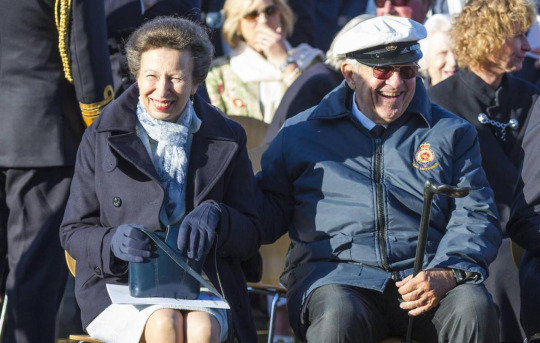
2015 Princess Anne and King Constantine II at the Beat the Retreat ceremony in Cowes, Isle of Wight on 5th June 2015.

2016 Princess Anne at the annual Founder's Day Parade at The Royal Hospital Chelsea on 9th June 2016.

2017 Princess Anne attending the London Lord Mayor's Banquet at the Guildhall during a State visit by the King Felipe and Queen Letizia of Spain on 13th July 2017.
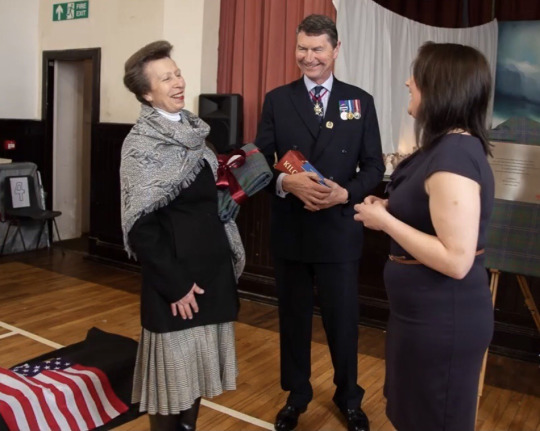
2018 Princess Anne and Sir Tim Laurence attending the World War I commemorations on the Isle of Islay in the Inner Hebrides of Scotland on 4th May 2018.

2019 Princess Anne with her husband Sir Tim opening the new Commonwealth War Graves Commission Visitor Centre, the CWGC Experience at Beaurains, France on 26th June 2019.
92 notes
·
View notes
Text

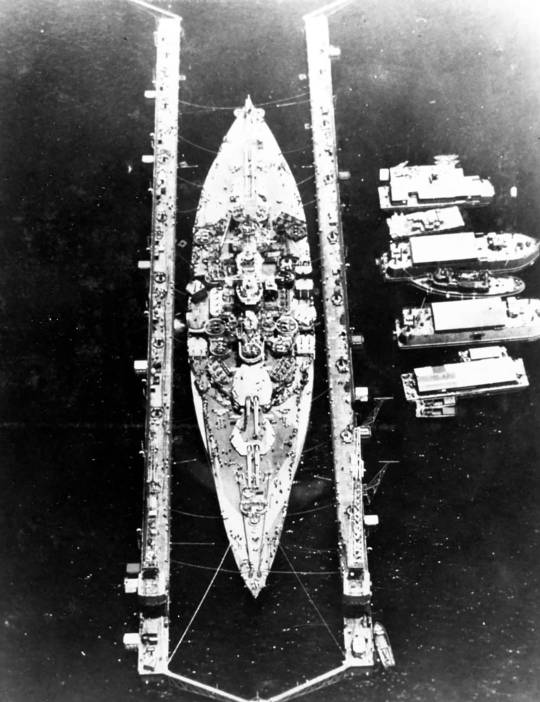
USS West Virginia (BB-48) in the floating drydock USS Artisan (ABSD-1), having her screws repaired at Espiritu Santo, Aessi Island, New Hebrides.
Date: November 9, 1944
Battleship North Carolina Archives: P2016.021
source
#USS West Virginia (BB-48)#USS West Virginia#Colorado Class#Dreadnought#Battleship#Warship#Ship#United States Navy#U.S. Navy#US Navy#USN#Navy#World War II#World War 2#WWII#WW2#WWII History#History#Military History#Espiritu Santo#Aessi Island#New Hebrides#USS Artisan (ABSD-1)#USS Artisan#Floating drydock#Drydock#Dry Dock#November#1944#my post
40 notes
·
View notes
Text
As I just picked up a LOT of new followers, I figured a "Hi? Hi! Welcome!" post was in order.
So. Ahem. Hi! I'm Joe, aka "ATOV", aka "Evil Authorlord" according to my readers over on Discord. This is my fandom tumblr, originally and still primarily for the How To Train Your Dragon fandom; my main writing project is "A Thing Of Vikings", which you can find on AO3 (currently available to logged-in accounts only, sadly, due to AI scraping risks).
A Thing Of Vikings is, in essence, the result of a plot bunny that bit down a few weeks after my spouse first introduced me to How To Train Your Dragon. My first comment after seeing the movie was "Cute, but not very historically accurate." Three weeks later, as I was preparing for NaNoWriMo 2016, the plot bunny bit.
"But what if it was historically accurate?"
And that's the central concept of the story. It's an Alternate History story where I take the first HTTYD film and drop it into Real Life History in the 1040s AD in the Scottish Hebrides, and let the consequences ripple out from there.
I try to keep the historical accuracy as high as possible; essentially, despite the fact that I have done my best to integrate dragons into our RL history, nothing changes in the timeline before Hiccup makes friends with Toothless. That's the point of divergence, and boy do things diverge from there.
To say that the story has... grown a bit is a bit of an understatement. It's beefy, with over 150 chapters so far; I recently wrapped up the fourth "book"/arc, and am plotting out Book V, so now is the perfect time to catch up if you're interested.
Also, I have a number of other writing projects, including an original fantasy novel that I am publishing serially on Sundays here on Tumblr, @fractured-legacies.
I hope you all enjoy, and thank you for following me.
78 notes
·
View notes
Text

THE BOY TRAVELLERS IN GREAT BRITAIN AND IRELAND by Thomas W. Knox. (New York: Harper, 1891) Profusely illustrated.
Adventures of two youths in a journey through Ireland, with visits to the Hebrides and the Isle of Man.
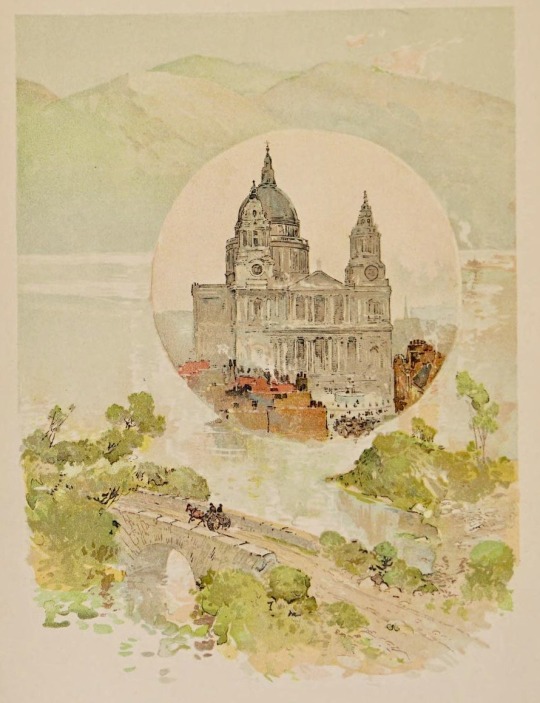



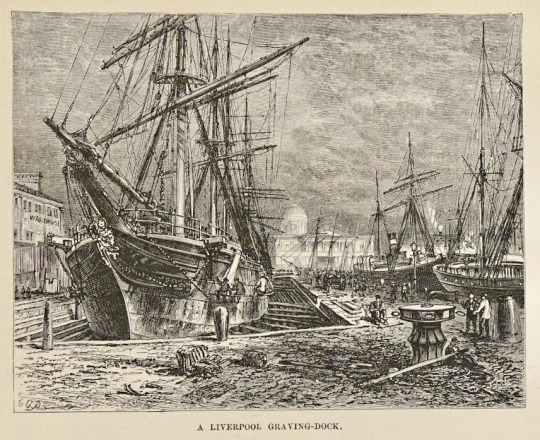


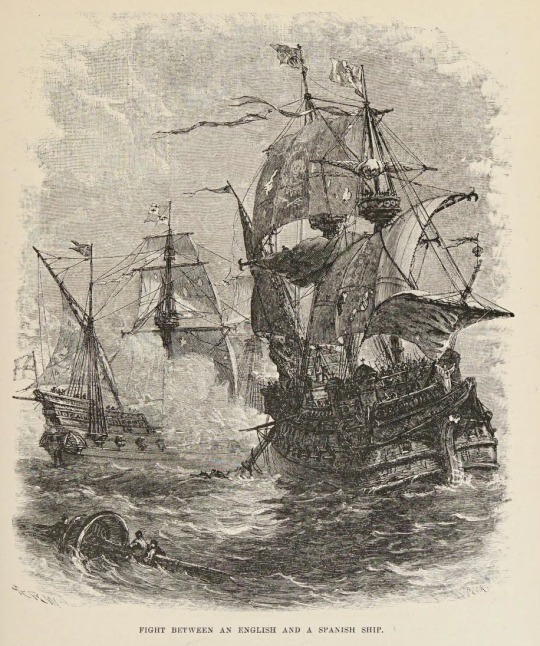
source
#beautiful books#book blog#books books books#book cover#books#vintage books#illustrated book#victorian era#travel#ireland#scotland#england#wales#hebrides#book design
49 notes
·
View notes